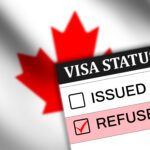
2025 IEC Pool Now Open: Apply for Work Permits and Explore Opportunities in Canada
The International Experience Canada (IEC) program for 2025 is officially open, and youth from participating countries are now able to submit their candidate profiles for a chance to work in Canada. The IEC program offers young people the opportunity to gain valuable work experience while exploring Canada, and it also serves as a stepping stone to Canadian permanent residency for those interested in building a future in the country.
The IEC program is unique because it provides applicants with a greater level of certainty regarding their chances of success compared to other work permit programs. In this article, we will discuss the program’s details, eligibility requirements, and the steps to apply.
Table of Contents:
- What is the International Experience Canada (IEC) Program?
- IEC Work Permit Categories
- Working Holiday
- Young Professionals
- International Co-op (Internship)
- Eligibility Criteria
- How to Apply for the IEC Program
- IEC Application Process and Selection
- The Likelihood of Receiving an Invitation
- Benefits of the IEC Program
- Key Takeaways
1. What is the International Experience Canada (IEC) Program?
The International Experience Canada (IEC) program is a temporary residence initiative that allows youth from select countries to work in Canada for a specified period. This program facilitates the mobility of young people through various work permit options and helps promote cultural exchange. The IEC is part of Canada’s international agreements with other nations, offering similar opportunities for Canadian youth to work and travel abroad.
The IEC program operates under three distinct work permit categories: Working Holiday, Young Professionals, and International Co-op (Internship). These categories are tailored to meet the different needs and qualifications of candidates from various countries.
2. IEC Work Permit Categories
The IEC program provides different types of work permits based on the applicant’s circumstances. Here’s a breakdown of each category:
Working Holiday
- Eligibility: No job offer required.
- Permit Type: Open Work Permit (OWP)
- Key Features: This category allows you to work for multiple employers and in multiple locations across Canada. It is ideal for those who wish to travel and earn money while working at various jobs.
Young Professionals
- Eligibility: Requires a job offer in Canada that is aligned with professional development goals.
- Permit Type: Employer-Specific Work Permit
- Key Features: This work permit is for those who have secured a job in Canada that will help them develop their professional skills. The position must be with one employer in a specific location and the work must be paid and not self-employed.
International Co-op (Internship)
- Eligibility: Must be a registered student at a post-secondary institution with a job offer for an internship.
- Permit Type: Employer-Specific Work Permit
- Key Features: This category is for students who require an internship as part of their academic program. The work placement must be directly related to the candidate’s field of study, and it is essential to complete their educational requirements.
Employer-Specific vs Open Work Permits:
Employer-specific work permits are tied to a single employer and location, whereas open work permits allow holders to work for any employer across most industries in Canada, offering more flexibility.
3. Eligibility Criteria
To participate in the IEC program, applicants must meet the following criteria:
- Citizenship: Must be a citizen of a country that has signed a youth mobility agreement with Canada.
- Age: Applicants must be between the ages of 18-35, though the exact age range depends on the bilateral agreement between Canada and the applicant’s country.
- Financial Requirements: Applicants need to have at least CAD $2,500 upon arrival in Canada to cover living expenses.
- Health Insurance: Must be able to acquire health insurance for the duration of the stay in Canada.
- Round-Trip Ticket: Must have a round-trip ticket or the financial means to purchase one at the end of the stay.
- Admissibility: Must meet Canadian admissibility requirements.
- No Dependents: Applicants cannot be accompanied by dependents during their stay under the IEC.
To check the specific terms and age range for eligibility, applicants can visit the dedicated IEC webpage.
4. How to Apply for the IEC Program
The IEC program uses a candidate pool system, where applicants first submit a candidate profile with basic details. Once in the pool, candidates can be selected to apply for a work permit in the next round of IEC invitations.
The steps for applying include:
- Submit Your Profile: Create a profile on the IEC website to enter the candidate pool.
- Wait for an Invitation to Apply (ITA): If selected, you will receive an ITA for a work permit.
- Apply for a Work Permit: Once you receive an ITA, you must apply for a work permit within 10 days.
5. IEC Application Process and Selection
The IEC program is based on a random selection process, where candidates in the pool are selected to receive an ITA for a work permit. IEC invites are issued in rounds, and candidates can receive an ITA at any time during the application period.
Once selected, candidates must apply for their work permit within 10 days of receiving an ITA. Failure to do so will result in the expiration of the invitation.
6. The Likelihood of Receiving an Invitation
Each applicant’s likelihood of receiving an invitation depends on several factors, including their country’s quota, the number of available work permits, and the number of applicants in the pool.
The likelihood of receiving an ITA is categorized as follows:
- Excellent (80-99% chance)
- Very Good (60-79% chance)
- Fair (40-59% chance)
- Low (20-39% chance)
- Very Low (1-19% chance)
Candidates can check their likelihood of receiving an ITA using the “Rounds of Invitations” page on the IEC website.
7. Benefits of the IEC Program
The IEC program offers numerous advantages to young people seeking to work and travel in Canada:
- Work Experience: Work in Canada to gain valuable international experience that can improve eligibility for permanent residency through pathways like the Canadian Experience Class (CEC).
- Cultural Exchange: Experience Canadian culture and lifestyle while contributing to the Canadian workforce.
- Pathway to Permanent Residency: Work experience gained through IEC can increase your Comprehensive Ranking System (CRS) score for Express Entry, potentially leading to permanent residency.
8. Key Takeaways
- The IEC program for 2025 is now open, and eligible youth from partner countries can begin submitting profiles.
- The program offers three types of work permits: Working Holiday, Young Professionals, and International Co-op (Internship).
- Applicants must meet specific criteria, including age requirements, financial resources, and health insurance coverage.
- The application process involves submitting a profile to the IEC pool and waiting for an invitation to apply.
- The likelihood of receiving an ITA depends on the applicant’s country’s quota and other factors.
Conclusion
The opening of the 2025 IEC pool presents an exciting opportunity for young people worldwide to experience life and work in Canada. With the potential to gain valuable work experience and a pathway to permanent residency, the IEC program remains one of the most sought-after immigration pathways for youth. Applicants are encouraged to submit their profiles early and stay informed about their chances of receiving an invitation.
For a free consultation about your work permit and student permit options, reach out to the CAD IMMIGRATION today!





